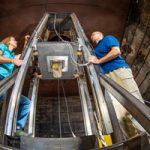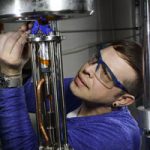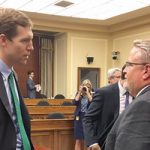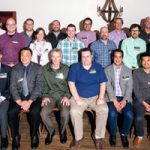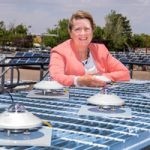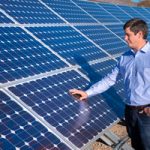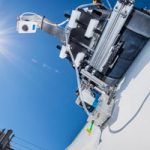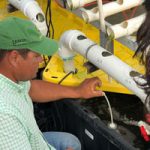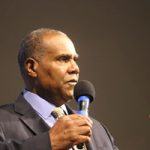Sandia abuses batteries for better energy storage
Lithium-ion batteries are most commonly found in electric cars, computers, medical equipment and aircraft. And they are getting more powerful all the time. The constant push for more storage and power drives the need for extensive battery testing, and Sandia's new drop tower has created yet another way to learn more about how these batteries respond to stress.
Hydrogen materials service advanced by new multilab consortium
Researchers at Sandia and Pacific Northwest national laboratories are leading a collaborative effort to investigate how hydrogen affects materials such as plastics, rubber, steel and aluminum. The Hydrogen Materials Compatibility Consortium, or H-Mat, will focus on how hydrogen affects polymers and metals used in diverse sectors, including fuel cell transportation and hydrogen infrastructure.
Erik Webb testifies before Congress on fossil energy research
Sandia geoscience research and application senior manager Erik Webb provided testimony before the U.S. House of Representatives Committee on Science, Space, and Technology in Washington, D.C., on June 19. Erik’s testimony focused on the importance of fossil energy research.
Praising Sandia’s culture of innovation
Sandia hosted its annual Innovation Celebrations in Livermore and Albuquerque May 16 to recognize the Labs' innovators. The celebration honored individuals who received patents, copyrights or licensed royalties, or created other intellectual property in 2018.
Global collaboration to study photovoltaic performance, reliability
An international community of research institutions, led by Sandia, to advance photovoltaic research and expand solar markets formally launched its work on May 14 in Munich, Germany. The organization provides a unique platform for studying photovoltaic performance and reliability in multiple, diverse environments and climates.
Rooftop solar panels get boost from Sandia tool
Homeowners and businesses may now have an easier time getting solar panels on rooftops thanks to software developed at Sandia. The new software can run a detailed, second-by-second simulation that shows utility companies how rooftop solar panels at a specific house or business would interact with a local electrical grid throughout the year.
Don’t set it and forget it — scan it and fix it with tech that detects wind blade damage
Drones and crawling robots outfitted with special scanning technology could help wind blades stay in service longer, which may help lower the cost of wind energy at a time when blades are getting bigger, pricier and harder to transport, Sandia researchers say.
Workshop strengthens Caribbean resilience
Sandia and DOE hosted the Advancing Caribbean Energy Resilience workshop at the Universidad Ana G. Mendez’s Gurabo campus in Puerto Rico, where researchers, engineers, policy makers and utility representatives met to discuss how to enhance and improve energy resilience throughout the Caribbean.
Earth Day 2019: ‘The most endangered species on Earth is us’
Steve Curwood, executive producer and host of public radio’s “Living on Earth,” spoke about “Investing in the New Energy Economy” to an audience of more than 200 during Sandia’s keynote Earth Day talk. His presentation examined the complexities of a transition from an energy portfolio dominated by fossil fuels, potential technological developments and future changes to the energy grid.
A day in the life of Sandia — 70 years and counting
To mark the 70th anniversary of President Truman’s letter that inspired Sandia to “… exceptional service,” Lab News photographer Randy Montoya spent a full day chronicling the people and work that make the Labs hum from sun up to sundown.
